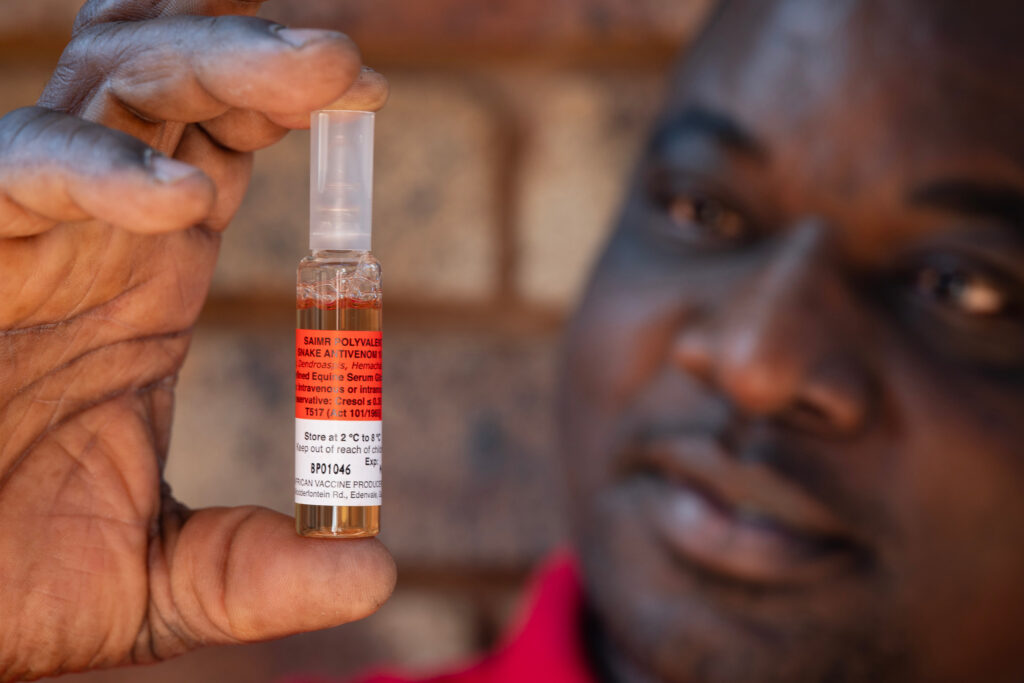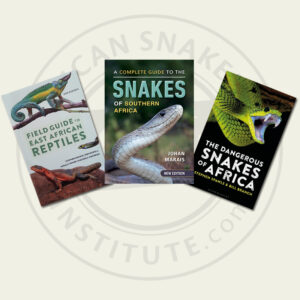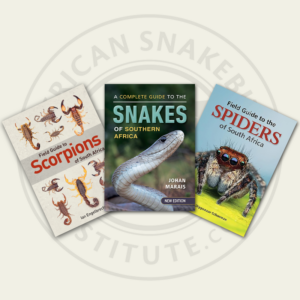Want to attend the course but can’t make it on this date?
Fill in your details below and we’ll notify you when we next present a course in this area:
Snake venom is a highly complex substance, and its effects can vary greatly depending on the snake species—and sometimes even between individuals of the same species.
All snake venoms are complex cocktails and when we say that Black Mamba venom is neurotoxic, it is predominantly neurotoxic, but also contains other toxins.

To help us understand how venom works and what it does to the human body, experts usually group snake venom into three main categories based on its primary effects:
This type of venom affects how the brain communicates with the body. It can block nerve signals, leading to paralysis. Common symptoms of neurotoxic bites include:
If left untreated, neurotoxic venom can lead to respiratory failure and death. Snakes in this category include:
Cytotoxic venom damages cells and tissues near the bite site. This often causes intense pain, swelling, and tissue death (necrosis). Symptoms may include:
Snakes with mainly cytotoxic venom include:
Haemotoxic venom interferes with the body’s ability to clot blood, leading to internal and external bleeding. Symptoms may appear several hours after the bite and include:
This type of venom is mainly found in:
⚠️ Keep in mind: These categories are generalisations. Some snakes have venom that contains a mix of toxins. For example, the Forest Cobra has both neurotoxic and cytotoxic components. So, while we might say a snake has “neurotoxic venom,” it simply means that the most noticeable or dangerous effects are on the nervous system.
A Brief History of Antivenom
Antivenom (sometimes called antivenin) has saved countless lives since it was first used in 1886. In South Africa, the first local antivenom was developed in 1901 in Pietermaritzburg and came as part of a basic kit with a syringe, lancet (small blade), ligature (for tying above a bite), and two small bottles of serum.
By 1928, the South African Institute for Medical Research (SAIMR) began producing antivenom more systematically. Scientists tested different animals to produce the serum but eventually chose horses—they’re large enough to provide a high volume of blood without harm.
Antivenom Today
South African Vaccine Producers (based in Johannesburg) manufacture:
Production of antivenom at the SAVP has come to a standstill and, according to them, they are busy upgrading their facilities. This has led to major antivenom shortages over the past few years. We now have an alternative product called PanAf Premium, a polyvalent antivenom imported from India and it is stocked in both private and state hospitals as well as veterinary practises.
Important Facts About Antivenom
In Summary
Understanding how different types of snake venom affect the body can help us respond more effectively to snakebite emergencies. It’s important to remember:
If you or someone else is bitten by a snake, seek emergency medical attention immediately—and try to identify the snake if it can be done safely. Time is critical, and the right treatment can make all the difference.
CONTACT US:
Product enquiries:
Caylen White
+27 60 957 2713
info@asiorg.co.za
Public Courses and Corporate training:
Michelle Pretorius
+27 64 704 7229
courses@asiorg.co.za
 ASI Book Combo 2
ASI Book Combo 2
 Rangers Book Combo 1
Rangers Book Combo 1
 ASI Combo C
R1,680.00
ASI Combo C
R1,680.00
Want to attend the course but can’t make it on this date?
Fill in your details below and we’ll notify you when we next present a course in this area:
Want to attend the course but can’t make it on this date?
Fill in your details below and we’ll notify you when we next present a course in this area:
Want to attend the course but can’t make it on this date?
Fill in your details below and we’ll notify you when we next present a course in this area:
Want to attend the course but can’t make it on this date?
Fill in your details below and we’ll notify you when we next present a course in this area:
Want to attend the course but can’t make it on this date?
Fill in your details below and we’ll notify you when we next present a course in this area:
Want to attend the course but can’t make it on this date?
Fill in your details below and we’ll notify you when we next present a course in this area:
Want to attend the course but can’t make it on this date?
Fill in your details below and we’ll notify you when we next present a course in this area:
Want to attend the course but can’t make it on this date?
Fill in your details below and we’ll notify you when we next present a course in this area:
Want to attend the course but can’t make it on this date?
Fill in your details below and we’ll notify you when we next present a course in this area:
Sign up to have our free monthly newsletter delivered to your inbox:
Before you download this resource, please enter your details:
Before you download this resource, would you like to join our email newsletter list?